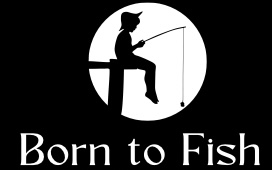Successful fishing goes beyond luck and chance; it requires an understanding of the science behind fish behavior and patterns. By delving into the fascinating world of fish biology, ecology, and physiology, anglers can gain valuable insights that significantly improve their fishing techniques. In this article, we explore the science of fishing, helping you comprehend the intricacies of fish behavior and patterns to enhance your angling success.
- The Senses of Fish: Fish possess a remarkable array of senses that help them navigate and find food. Understanding these senses can aid anglers in selecting the right bait and lures. Fish rely on sight, smell, hearing, taste, and lateral line systems to perceive their surroundings. Consider these senses when choosing the most enticing offerings for your target species.
- Feeding Habits and Timing: Fish have distinct feeding habits influenced by factors such as weather conditions, water temperature, and available food sources. Learn about the feeding patterns and preferred prey of your target species. By studying these habits, you can determine the best times of day, locations, and techniques for maximizing your chances of a successful catch.
- Water Temperature and Depth: Water temperature plays a vital role in fish behavior. Fish are ectothermic, meaning their body temperature fluctuates with the surrounding water. Different species have specific temperature preferences, so understanding these preferences can guide your fishing strategy. Additionally, fish tend to inhabit specific depths based on factors like temperature, oxygen levels, and food availability.
- Structure and Cover: Fish seek structure and cover for protection, ambush points, and breeding grounds. Submerged vegetation, rock formations, fallen trees, and underwater ledges are examples of such structures. By identifying and targeting these areas, you can increase your chances of encountering fish. Cast near these features and vary your retrieval techniques to trigger strikes.
- Understanding Water Currents: Water currents influence fish behavior and feeding patterns. Fish often position themselves strategically to take advantage of currents, which transport food and disorient prey. Study the flow and direction of currents in your fishing area. Casting your bait or lure upstream and allowing it to drift naturally can be an effective strategy for enticing fish.
- Seasonal Migration and Spawning: Many fish species undergo seasonal migrations and spawning rituals. Understanding these patterns is crucial for locating and targeting fish at the right time and place. Research the migration routes and spawning grounds of your target species. Adjust your fishing techniques and locations accordingly to increase your chances of encountering actively feeding fish.
- Adjusting to Weather Conditions: Weather conditions directly impact fish behavior. Fish may become more active during periods of low light, such as early morning or late evening. Additionally, changes in barometric pressure, temperature fluctuations, and weather fronts can influence fish activity. Adapt your fishing strategies based on prevailing weather conditions to optimize your results.
- Observing Prey and Predator Relationships: Understanding the relationship between prey and predator is key to successful fishing. Observe the natural food sources in your fishing area and imitate them with your choice of bait or lures. By presenting an offering that closely resembles the preferred prey of your target fish, you increase your chances of triggering a strike.
- Fishing Ethics and Conservation: While exploring the science of fishing, it is essential to embrace ethical angling practices and conservation efforts. Respect fishing regulations, adhere to catch limits, and handle fish with care to ensure their survival upon release. Engage in sustainable fishing practices that preserve fish populations and their habitats for future generations.
- Continued Learning and Observation: The science of fishing is a lifelong journey of learning and observation. Stay curious, read books and articles, engage with fellow anglers, and spend time on the water to hone your understanding of fish behavior. Each fishing trip is an opportunityto gather valuable information and refine your skills as an angler.
Conclusion: Mastering the science of fishing involves understanding the intricacies of fish behavior and patterns. By studying the senses, feeding habits, preferred habitats, and environmental factors that influence fish, anglers can make informed decisions to increase their chances of success. Remember to observe water temperature, structure, currents, and weather conditions, while also practicing ethical fishing practices and conservation. The science of fishing is a fascinating and ongoing journey that deepens our connection with the underwater world. Embrace the knowledge and apply it to your angling pursuits, and you’ll undoubtedly elevate your fishing experience to new heights. Happy fishing!


